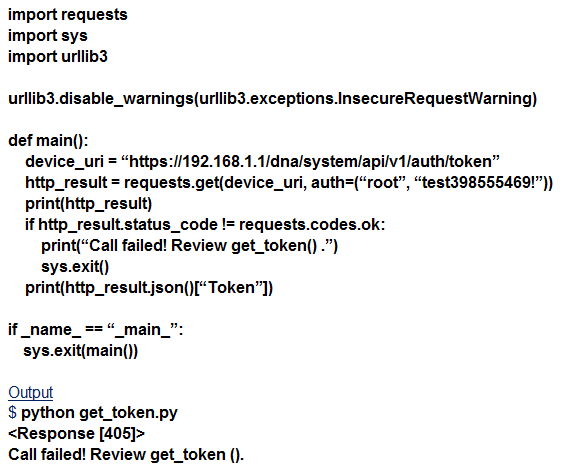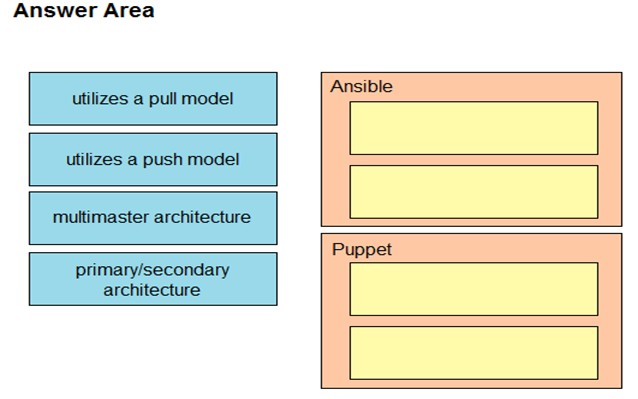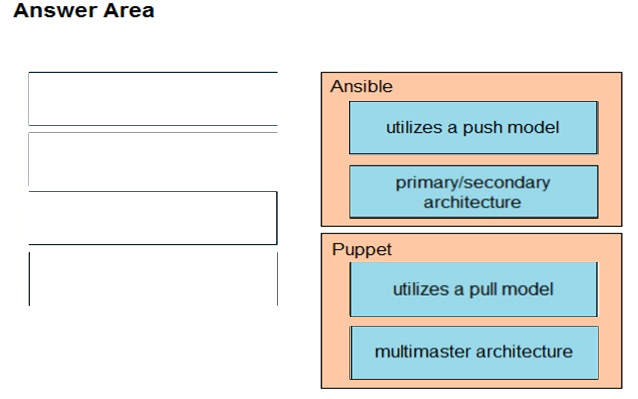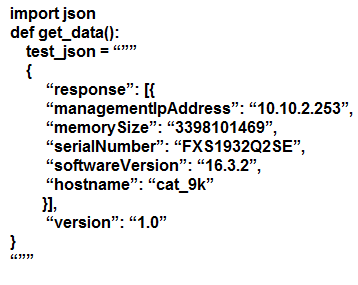Which devices does Cisco DNA Center configure when deploying an IP-based access control policy?
C
Reference:
https://www.cisco.com/c/en/us/td/docs/cloud-systems-management/network-automation-and-management/dna-center/1-2/user_guide/ b_dnac_ug_1_2/b_dnac_ug_1_2_chapter_01000.html#id_53453
Which tool is used in Cisco DNA Center to build generic configurations that are able to be applied on devices with similar network settings?
C
Reference:
https://www.cisco.com/c/en/us/td/docs/cloud-systems-management/network-automation-and-management/dna-center/1-3/user_guide/ b_cisco_dna_center_ug_1_3/b_cisco_dna_center_ug_1_3_chapter_0111.html
In which part of the HTTP message is the content type specified?
C
Reference:
https://developer.mozilla.org/en-US/docs/Web/HTTP/Headers/Content-Type
An engineer must create an EEM applet that sends a syslog message in the event a change happens in the network due to trouble with an OSPF process. Which action should the engineer use? event manager applet LogMessage event routing network 172.30.197.0/24 type all
C
An engineer runs the code against an API of Cisco DNA Center, and the platform returns this output. What does the response indicate?
D
What are two benefits of YANG? (Choose two.)
AE
DRAG DROP -
Drag and drop the characteristics from the left onto the orchestration tools they describe on the right.
Select and Place:


Refer to the exhibit. After running the code in the exhibit, which step reduces the amount of data that the NETCONF server returns to the NETCONF client, to only the interface's configuration?
D
Running the script causes the output in the exhibit. Which change to the first line of the script resolves the error?
C
Which line must be added in the Python function to return the JSON object {`cat_9k`: `FXS1932Q2SE`}?
A